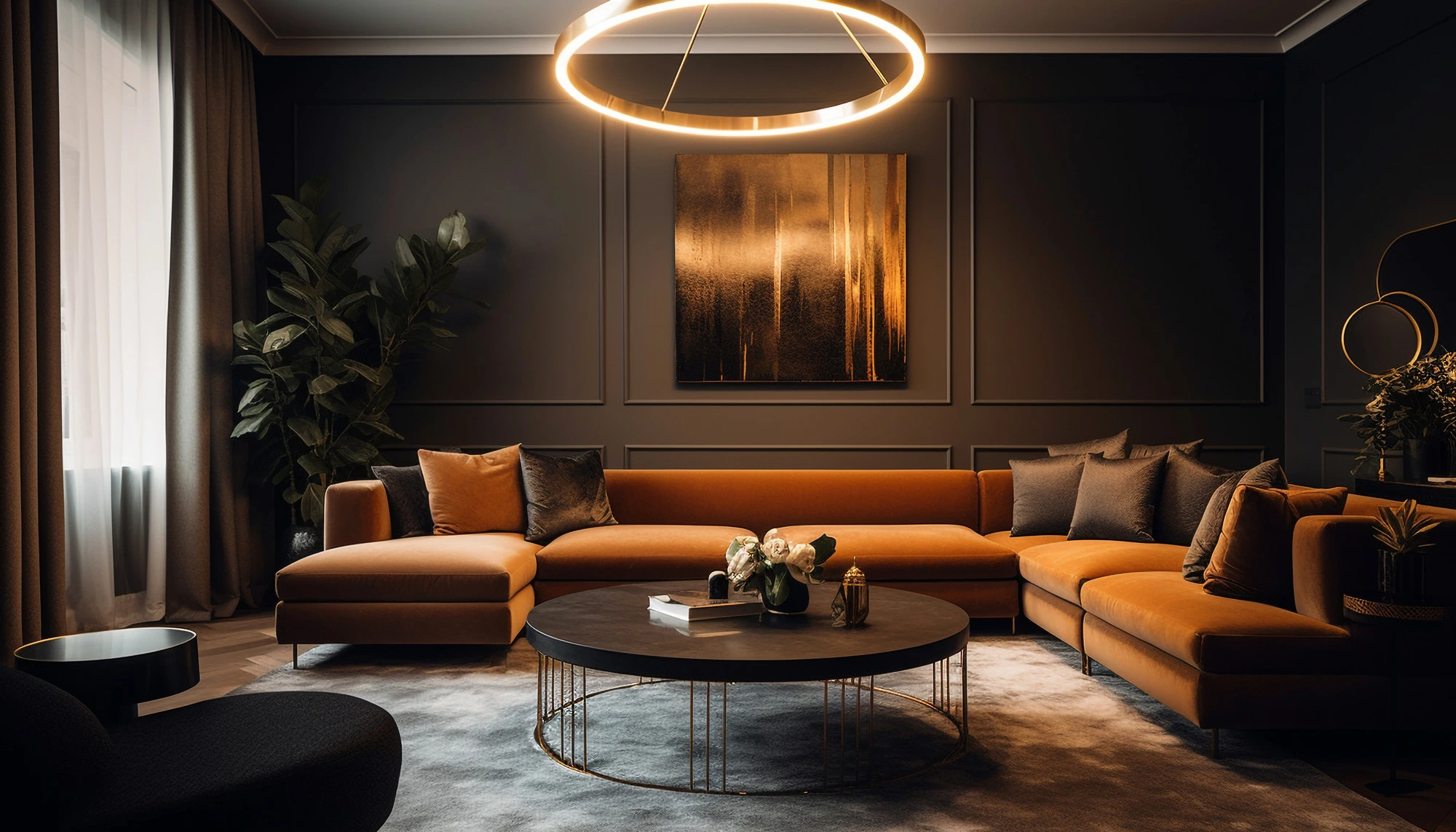
Interior design is more than just aesthetics; it is about creating rooms that are functional, pleasant, and visually appealing. Understanding the fundamentals of color theory, space planning, and design styles is critical for every aspiring interior designer.
Color is important in interior design because it affects emotion, ambiance, and perception. A good understanding of color theory is beneficial in constructing harmonious and visually appealing places. The color wheel, which includes primary, secondary, and tertiary colors, is an important tool for understanding color relationships. The primary colors—red, yellow, and blue—are the foundation of the color wheel since they cannot be formed by combining other colors. Secondary colors, like orange, green, and purple, are created by combining two basic colors. Tertiary colors are the result of combining a main and a secondary color.
Various color schemes stimulate different emotions and establish unique environments. A monochromatic scheme creates a unified look by using various tones of the same color. An analogous scheme uses colors that are close to one another on the color wheel, resulting in a harmonious effect. Complementary schemes combine colors that are opposite each other on the color wheel, resulting in striking contrasts. A triadic scheme uses three colors that are uniformly placed around the wheel, resulting in a balanced but dynamic palette.
Color psychology is also important because colors have a strong influence on our emotions and behavior. For example, red frequently has a connection with energy and excitement, whereas blue is typically associated with calm and quiet.
Space planning involves efficiently utilizing space in order to ensure both functionality and aesthetic appeal. Functional zoning is a concept that divides a room into areas allocated for specific use, such as living, dining, and sleeping. Traffic flow is an essential factor; make sure the space is easy to get around and the pathways are clear. Scale and proportion are essential for establishing a balanced and harmonious appearance since they define the size and relationship of objects inside the space. Furniture placement should be carefully considered, taking into account the size of the pieces, the flow of movement around the room, and the amount of natural light available.
Design styles represent various cultural, historical, and aesthetic decisions. Understanding different design styles allows you to choose one that best suits your personal preferences and the desired atmosphere of the area. Classic design focuses on elegance, symmetry, and timelessness. Modern design incorporates clean lines, minimalist aesthetics, and functional elements. Contemporary design combines modern and traditional elements, frequently using strong colors and patterns. Scandinavian design is characterized by its simplicity, functionality, and use of natural materials. Industrial design incorporates raw, exposed materials such as brick and metal into vintage pieces. Bohemian design is distinguished by its unique blend of styles, patterns, and textures, which often include global influences.
Aside from color theory, space planning, and design styles, several additional aspects play an important role in interior design. Lighting, for example, is crucial in setting mood and functionality. Maximizing natural light through wide windows and skylights can brighten a room, while artificial lighting fixtures like overhead lights, table lamps, and floor lamps can be employed to create distinct moods and highlight specific areas.
Texture and materials create depth and interest in a room. Consider the physical properties of materials such as textiles, wood, and stone to enhance the sensory experience of a room. Acoustics also play an important part in comfort and functionality; employing sound-absorbing materials like curtains, rugs, and acoustic panels can help to reduce noise.
Sustainability is another key factor to consider. Using eco-friendly materials, eliminating waste, and conserving energy are all activities that contribute to a more responsible design approach. Accessibility is also important; developing rooms that are accessible to individuals with disabilities requires considerations such as wheelchair accessibility, grab bars, and lever-style door handles.
Feng Shui, an ancient Chinese discipline that promotes harmony and balance, can be included in home design. This includes evaluating object placement, energy flow, and the usage of specific colors and symbols. Overall, the most effective interior design projects reflect the client's personal style and preferences. Encouraging clients to express their individuality via color, material, and furniture will result in rooms that are not only physically appealing but also personalized to their specific needs and preferences.
By taking these steps, you may design interior spaces that are not just aesthetically beautiful but also useful, comfortable, and sustainable. Interior design is a collaborative process in which the designer and client work together to create a space that suits the client's individual requirements and desires. DreamZone Kochi is a creative skill development initiative of CADD Centre Training Services Private Limited specializing in creative courses such as fashion design, graphics, animation and interior design coursesin Ernakulam. DreamZone, located in the heart of Kochi, Kerala, provides an intensive curriculum and innovative facilities to help aspiring interior designers develop their creative talents. DreamZone has established itself as a top choice for people looking for a successful career in the creative field, thanks to its highly qualified instructors and industry-specific training.